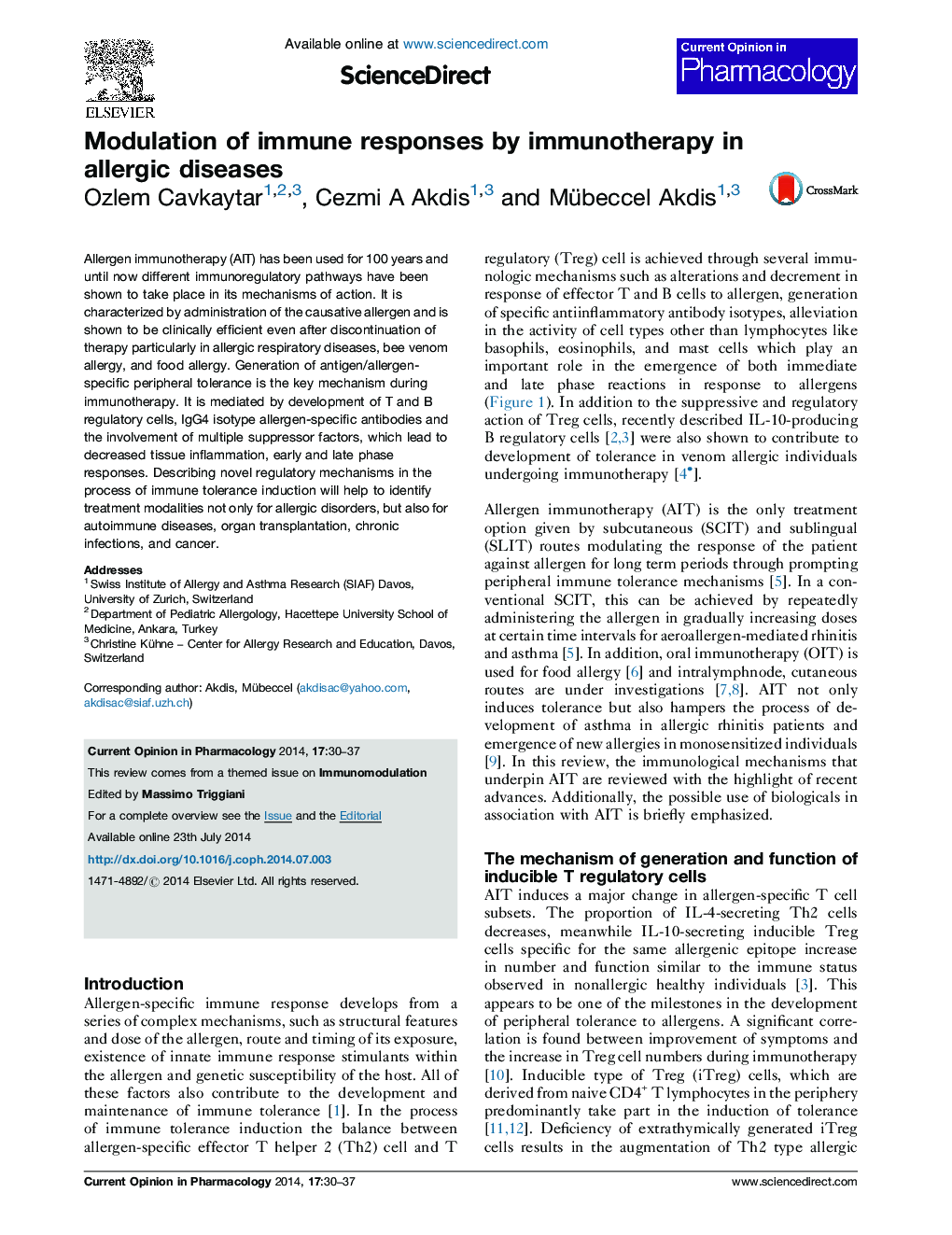| کد مقاله | کد نشریه | سال انتشار | مقاله انگلیسی | نسخه تمام متن |
|---|---|---|---|---|
| 2529889 | 1558131 | 2014 | 8 صفحه PDF | دانلود رایگان |
• AIT modulates the response of the patient against allergen for long-term periods.
• The generation of Treg cells results in the development of peripheral tolerance to allergens.
• Interleukin-10 and IgG4 are key molecules taking role during AIT.
• Mucosal surface epithelial barrier function is important in response to therapy.
• Stimulation with IL-1b, IL-6, TLR-4, TLR-8 or myeloid DC breaks allergen-specific CD4+ T cell tolerance.
Allergen immunotherapy (AIT) has been used for 100 years and until now different immunoregulatory pathways have been shown to take place in its mechanisms of action. It is characterized by administration of the causative allergen and is shown to be clinically efficient even after discontinuation of therapy particularly in allergic respiratory diseases, bee venom allergy, and food allergy. Generation of antigen/allergen-specific peripheral tolerance is the key mechanism during immunotherapy. It is mediated by development of T and B regulatory cells, IgG4 isotype allergen-specific antibodies and the involvement of multiple suppressor factors, which lead to decreased tissue inflammation, early and late phase responses. Describing novel regulatory mechanisms in the process of immune tolerance induction will help to identify treatment modalities not only for allergic disorders, but also for autoimmune diseases, organ transplantation, chronic infections, and cancer.
Journal: Current Opinion in Pharmacology - Volume 17, August 2014, Pages 30–37
